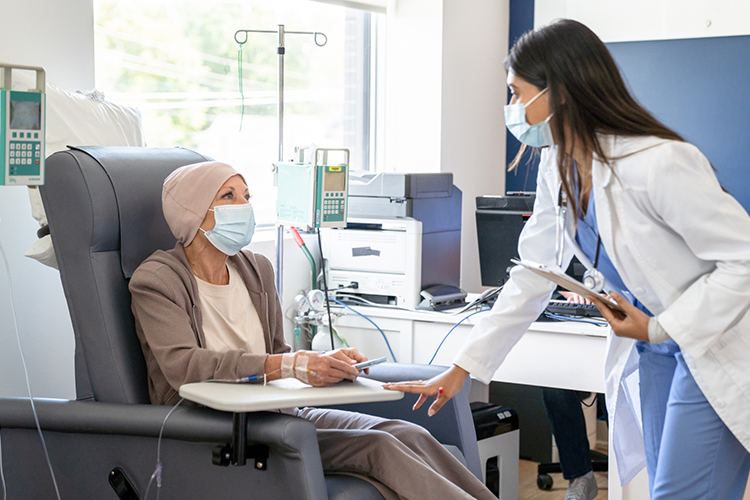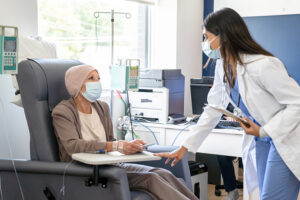Introduction
Cancer is a complex and devastating disease that affects millions of people around the world. According to the World Health Organization, cancer was the second leading cause of death globally in 2020, accounting for an estimated 10 million deaths1. In North America, cancer is also a major public health concern, with more than 2.3 million new cases and 700,000 deaths reported in 20202.
However, not all cancer patients have equal access to quality care and treatment options. In fact, there are many challenges and barriers that can prevent cancer patients from receiving the best possible care in North America. Some of these challenges include:
1- High cost of cancer care
Cancer treatment can be very expensive, especially in the United States, where health care spending per capita is the highest in the world3. Many cancer patients face financial difficulties and may not have adequate insurance coverage or resources to afford the treatments they need. According to a study by the American Cancer Society, about 137 million Americans had medical financial hardship in 2018, and cancer patients were more likely to experience this than those without cancer4. Moreover, the cost of cancer drugs and therapies has been rising rapidly, making them unaffordable for many patients and health systems5.
2- Long waiting times and limited availability of services in cancer care
In Canada, where health care is publicly funded, cancer patients may face long waiting times and limited availability of services due to the high demand and limited supply of health care resources. According to a report by the Canadian Partnership Against Cancer, the median wait time for radiation therapy in Canada was 28 days in 2019, and only 83% of patients received treatment within the recommended benchmark of four weeks6. Furthermore, some cancer services, such as specialized surgery, genetic testing, and clinical trials, may not be available or accessible in all regions of Canada, forcing some patients to travel long distances or seek care elsewhere7.
3- Lack of personalized and precision medicine for cancer care
Cancer is not a single disease, but a collection of diverse and heterogeneous diseases that vary in their molecular characteristics, clinical behavior, and response to treatment. Therefore, cancer patients need personalized and precision medicine, which is the tailoring of treatment to the individual characteristics of each patient and their tumor. However, the implementation of personalized and precision medicine in North America faces many challenges, such as the lack of standardized and validated biomarkers, the complexity and cost of genomic testing, the regulatory and ethical issues of data sharing and privacy, and the need for multidisciplinary collaboration and education8.
Given these challenges, what are the possible solutions for cancer patients in North America? Here are some of the options that cancer patients may consider:
4- Medical tourism for cancer care
Medical tourism is the intentional travel to another country to receive medical care. Many patients engage in medical tourism because the procedures they seek can be performed in other countries at lower cost and without the delay and inconvenience of being placed on a waiting list. According to a report by Patients Beyond Borders, the global medical tourism market was worth $45.5 billion in 2019, and the most popular destinations for medical tourists were Mexico, Colombia, Costa Rica, Turkey, India, Dominican Republic, Malaysia, South Korea, and Thailand9.
Some of the common procedures that medical tourists seek abroad include dental care, cosmetic surgery, fertility treatment, organ transplant, and cancer treatment10. However, medical tourism also involves certain risks, such as the quality and safety of care, the potential language and cultural barriers, the varying standards and regulations of health care, and the legal and ethical implications of traveling abroad for medical care10. Therefore, medical tourists need to do thorough research and informed decision-making before choosing a destination and a provider for their medical care.
5- Clinical trials for cancer care
Clinical trials are research studies that test new drugs, devices, or procedures for safety and effectiveness in humans. Clinical trials are essential for the development and advancement of cancer treatment, as they offer the opportunity to access novel and innovative therapies that are not yet approved or available in the market. According to the National Cancer Institute, there are more than 12,000 cancer clinical trials in the United States, and more than 1,000 in Canada11.
However, only a small percentage of cancer patients participate in clinical trials, due to various barriers, such as the lack of awareness and information, the eligibility criteria and enrollment process, the cost and insurance coverage, the location and travel requirements, and the potential risks and benefits of the experimental treatment12. Therefore, cancer patients who are interested in clinical trials need to consult with their health care team, learn about the different types and phases of clinical trials, and find a suitable trial that matches their needs and preferences.
6- Alternative and complementary therapies for cancer
Alternative and complementary therapies are non-conventional approaches to health and wellness that are used either instead of (alternative) or along with (complementary) conventional medicine. Some of the common alternative and complementary therapies for cancer include acupuncture, massage, meditation, yoga, herbal medicine, homeopathy, and dietary supplements. Many cancer patients use alternative and complementary therapies to cope with the symptoms and side effects of cancer and its treatment, to enhance their quality of life, and to improve their physical and mental well-being.
However, alternative and complementary therapies are not regulated or standardized, and their safety and effectiveness are not well established by scientific evidence. Therefore, cancer patients who use alternative and complementary therapies need to be cautious and informed, and communicate with their health care team about their use and potential interactions with their conventional treatment.
Conclusion
Cancer treatment can be challenging in North America due to the high cost, long waiting times, limited availability, and lack of personalization of care. However, cancer patients have some options to overcome these challenges, such as medical tourism, clinical trials, and alternative and complementary therapies. These options may offer some benefits but also entail some risks and require careful consideration and consultation with the health care team. Ultimately, cancer patients need to make informed and empowered decisions that suit their individual needs and preferences, and that optimize their health outcomes and quality of life.







